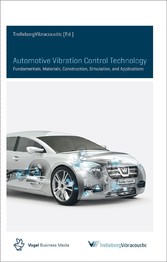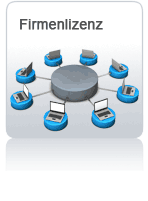Suchen und Finden
Service
Mehr zum Inhalt

Automotive Vibration Control Technology - Fundamentals, Material, Construction, Simulation, and Applications
Titel
3
Copyright
4
Foreword
5
Table of Contents
7
Part 1 Fundamentals
17
1. Vibration Control Technology for the Automotive Industry
17
1.1 Fundamentals and requirements of vibration control technology
17
1.2 Vibration control technology in automotive engineering
17
2. Isolation, Damping, and Absorption
21
2.1 A material becomes predictable
21
2.2 The principles of vibration isolation
22
2.3 Four-pole theory: an approach to describing the isolation of high frequencies
25
2.4 Effects of damping and friction on isolation
34
2.5 Vibration absorption
43
3. Vibration Control Materials
45
3.1 Introduction
45
3.2 Elastomers – an extraordinary class of materials
45
3.3 Base polymer – or crude rubber (caoutchouc)
46
3.4 Elastomeric materials – overview of typical material properties
48
3.5 Natural rubber – discovery and history, properties and application
53
3.6 Compounding and vulcanization
70
3.7 Molding and vulcanization
78
3.8 Elastomers for vibration control – an overview
81
3.9 Component groups – engineered materials
86
3.10 Bonding technology
102
4. From System Knowledge to a Better Component
133
4.1 From system description to component specification
133
4.2 From specification to component design
134
4.3 Component design
140
5. Component Production
147
5.1 The single-loop development approach
147
5.2 From component drawing to sample product
149
6. Testing in the “Single-Loop” Era
153
6.1 Fatigue strength testing – history and motivation
153
6.2 Fatigue strength of elastomeric mounts
154
6.3 Virtual endurance test
155
6.4 Statistical basis
159
6.5 Reducing test duration by omission
164
6.6 Assessment of temperature effect
170
6.7 Conclusion
171
Part 2 Applications
173
7. Engine and Transmission Mounts
173
7.1 Mounting systems
173
7.2 Basic principles of mounting systems
196
7.3 Elastomeric compounds for engine and transmission mounts
206
7.4 Elastomeric mounts
212
7.5 Conflicting objectives of elastomeric mount elements
226
7.6 Engine and transmission mounts with hydraulic damping
228
7.7 Hydrobushings
254
7.8 Air-damped mounts
257
7.9 Switchable engine mounts
267
7.10 Active Vibration Control
276
7.11 Responses to market requirements
285
7.12 Summary
304
7.13 Guiding principles for engine and transmission mount design
305
8. Chassis Mounts
307
8.1 Ride comfort or driving safety
307
8.2 Rubber-metal suspension components
311
9. Rubber-to-Metal Mounts for CommercialVehicles
323
9.1 Engine mounts for medium and heavy trucks
323
9.2 Chassis mounts
328
9.3 Cab mounts
331
9.4 Special mounts
333
10. Air Springs
337
10.1 The use of air springs in vehicle technology
337
10.2 Function and physical principles of air springs
348
10.3 Design and characteristics of air spring bellows
354
10.4 Configuration and design of air springs
361
10.5 Production of air springs
369
10.6 Reinforcing layers
370
10.7 Responses to specific market requirements
372
11. Torsional Vibration Dampers
375
11.1 Cranktrain
375
11.2 Damper isolator pulleys for auxiliary devices
389
12. Absorbers
399
12.1 Linear absorbers
399
12.2 Rotational vibration absorbers
411
12.3 Driveshaft mounting, centering, and torque transmission components
415
13. Fundamentals of Polyurethane (PUR) as a Springing and Damping Material
421
13.1 Introduction
421
13.2 Basic chemistry
422
13.3 Catalysts
425
13.4 Comparison
426
13.5 MCU elastomers in automotive applications
426
14. Microcellular Polyurethane (MCU)
427
14.1 Principles of MCU applications
427
14.2 Development examples of automotive components
430
14.3 Component behavior prediction through FEA (Finite Element Analysis)
433
14.4 Body mounts and suspension mounts
436
14.5 Application examples for MCU
437
14.6 Summary
440
Appendix
441
Index of chapters and authors
441
Acronyms
442
References
444
Further reading
447
Illustration credits
448
Index
449
Alle Preise verstehen sich inklusive der gesetzlichen MwSt.











